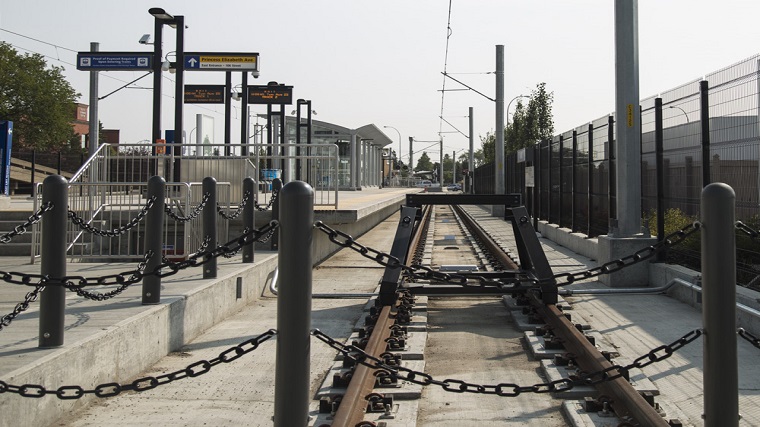It is a saga that NAIT students are all too familiar with – the long-awaited (and much debated) story of the Metro LRT line. Nearly a year and a half after it was originally scheduled to open, the newest expansion to Edmonton’s LRT system is slated to debut with an adjusted schedule on Sept. 6. This doesn’t mean that the saga has come to an end, however.
The Metro LRT line has been plagued with problems from the start, with concerns over funding and risks identified early in the planning process. Edmontonians can’t complain about budgeting, however, as the project came in $90 million under its estimated $755 million price tag with a final posted cost of $665 million. Instead, according to a recent report from the city auditor, significant issues were present early on. Major milestones were missed early in the city’s timeline, with delays as long as 23 months on construction and other milestones still outstanding, notably on the signalling contract, formally known as the Communications-based train control (CBTC) contract. Many requirements for the new CBTC system have not been met by the contractor, Thales Canada. Chief among the issues raised by the city auditor is concern over project management processes within the city, with a focus on communication, time management and human resources outlined in the audit report.
Signalling contractor Thales has fired back with its own version of events, claiming the company has been misrepresented and that misinformation has been released.
The company says it still has not received an official copy of the safety audit report from the city’s consultant – an unpublished internal report completed by a third party expert for the City of Edmonton.
“We have not been advised of any actual safety issue or deficiency in either the design, the implementation or in the safety case for the system that we provided,” the company said in a statement.
However, City of Edmonton documentation shows that the safety audit was submitted to Thales on Aug. 7, nearly a week before Thales released a statement criticizing actions taken by the city. With a legal battle possible over the costs of project delays, both the City of Edmonton and Thales are keeping their cards close to the vest on the matter.
As of last month, the city has approved a staged implementation for the new line which begins Sept. 6. In first-stage implementation, trains will run on the Metro line under “line of sight” operations, an industry term which translates to a requirement for operators to be able to stop the train within half the distance they can see. In the case of the Metro line, this means speeds will not exceed 25 km/h during the first-stage implementation. This translates to a 15-minute service frequency between Churchill Station and the NAIT station, with an estimated travel time of 14 minutes. An added bonus of the staged implementation is that during peak hours, Metro line service will start at Century Park station and provide full service to NAIT. Trains will not be travelling beyond Health Sciences station southbound during off-peak and weekend service hours.
A downside to line of sight operations is a decrease in overall LRT system frequency. Service between Churchill and Clareview will see a decrease in frequency to an average of 7.5 minutes between trains. To compensate, ETS is adjusting Capital line service by running fivecar trains during peak hours, versus three-car trains planned for the Metro line.
Once fully implemented, service between NAIT and the Health Sciences station will be on 10-minute intervals, with travel time between Churchill station and NAIT of seven minutes. LRT service through the downtown core will ultimately have a frequency of 2.5 minutes, with Capital line service returning to standard five-minute frequency during peak hours. Full service is expected to increase LRT ridership by up to 13,000.
Long-term development of Edmonton’s LRT network will eventually see the Metro line extended to St. Albert, with a NAIT station in the Blatchford area, formerly the City Centre Airport. Traditional bus service is also being enhanced, starting with an increased frequency on Route 15 and routes 8 and 9 facing reviews. Although Edmonton Transit’s olive branch last year of the Ookspress will be mothballed in favour of the Metro line, the service can be restarted immediately during LRT service outages.
Will this be the last time we hear about the Metro LRT line? With safety concerns and system changes still coming, NAIT students may still be at the mercy of contract wrangling and legal manoeuvring. Traffic concerns will also abound, as commuters adjust to Metro line service. Ultimately the Metro line may be the answer to NAIT’s parking woes as students adjust to utilizing the new transit service.
Nicolas Brown
Issues Editor





